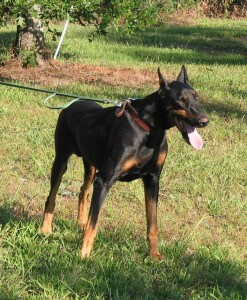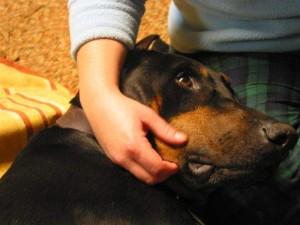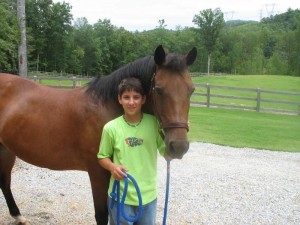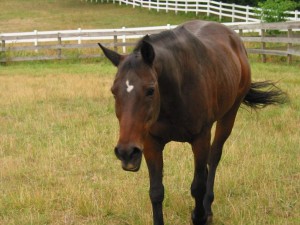In 1495 history records an individual known only as Der Sohn. Prussian by nationality, perhaps German by blood, he resided in the Rhineland, West and South of the Baltic homeland of the Old Prussians, since conquered by the Teutonic Knights. He came from a farm “in der Brumbach” and so it was that the Brumbach surname sprang forth, with the clan content to stay in the shadow of forbidding Siegen Castle until the intrepid Johann Heinreich Brumbach sent the family tumbling West across Europe, leapt the ocean waters, and fell upon American shores, settling in the Shenandoah Valley of Virginia. Johann Heinreich became Henry, became an American patriot, became a man recognized for his valor in the Revolutionary War. His grandson, Joseph, born in 1799, the year of his grandfather’s death, had inherited Henry’s fearless heart, and again the family set forth towards the setting sun, stopping in Illinois to take stock of where they stood. Joseph became more than just a man, he became a patriarch, burying four wives in the process and siring 19 children and giving 8 stepchildren the Brumbach name. His last wife was a lass from County Cork, who bore six children, the very last of which, Olive, was born to a father 72 years of age. The second to last, Ezra Herbert, known as Zeke, inherited the Prussian pioneering spirit, and once more they rolled on, flowing like water through the valleys and the low places, across the vast, forbidding wilderness of the American West. With him he brought his bride, an Irish girl like his mother, by the name of Mary Theresa Phelan. Zeke and Mary, who went by Mame, traveled by wagon to the Oregon-Idaho border, and there this tributary of the Brumbach family stopped, and put down roots, deep roots, all the more necessary in the softly undulating, treeless hills of that new frontier.
Irish fire forged Prussian stoicism into a substance stronger than steel. Mame was a woman who had taught school in Illinois, the sound of wolves howling accompanied her pre-dawn walks to the one room schoolhouse. In her youth she had encountered a traveling salesman proffering impervious pots and pans, when he challenged Mame to test the strength of a saucepan, she bent it double. The Irish-American proved herself more than equal to the uncompromising demands placed upon her by the role of frontier wife, and helped Zeke establish the family farm. It was anchored by a white American farmhouse, the sort that would permeate the imaginations of Wyeth and Rockwell. Zeke and Mame brought Joseph and then Rex into the world, followed by the twins, Ira and Irene, in 1908. Many years later, in 1917, along came Ezra, the last of the pioneering Brumbachs.
The Brumbach family epitomized the American pioneer, living the predawn life of the farmer, a life of darkness and of light, an Easter life, of Good Friday hardship, and joyous Resurrections. The family accumulated stories, as all families do. Of the Brumbach spirit that lived on in Ira, sending him still further West to the Alaskan wilderness, where he passed away, still just a young man. Of the daring spirit of the only daughter, Irene, who attended college and played on the basketball team while there. Of Ezra’s war hero record in WWII, where he fought in Northern Italy and was formally honored for his ability to keep up troop morale. The intrepid family was the first in the region to own a car, and quickly adopted the most cutting edge farming equipment, which they then rented to other farmers. Smart, pragmatic, quintessentially American, the Brumbach family thrived.
Eventually these Brumbachs, compelled by an unquenchable desire to see and do, moved on, seeking out life wherever they could find it. But Ezra, having returned from Europe and the ravages of war, having missed death by a matter of inches more than once and on one memorable occasion when his helmet, acting as a pillow, was shot out from under him, Ezra stayed. Blessed with the Brumbach intellect, he became a master of the game of chess. Blessed with the Brumbach stoicism, he lived the difficult life of a sheep farmer. Blessed with the Brumbach appreciation for family, he took up the task of maintaining the white American farm house, its barn and outbuildings, its farm land and sheep pastures. He did not marry, he did not have children, he did not move along with time, but stayed still, like a rock in a river, as it all flowed past.
A Roman Catholic, he did not turn away from the altar after Vatican II, attending the Tridentine Rite throughout his life. He kept with him his books, his chess, his way of life. He maintained a long tradition of letter writing, drafting compelling notes of wit and wisdom, treasured by those who received them, in much the same way his humor was treasured by his fellow soldiers. Long lived and sturdy, like most Brumbachs, Ezra maintained his farming life far longer than most expected. Finally, a degenerating hip forced his retirement and his movement to an assisted care facility. Stubbornly recovering from surgery, Ezra took up the habit of strolling to an old fashioned soda shop down the road from his new residence.
But no amount of stubbornness can indefinitely hold off the advance of time, even the rock in the river is eventually washed away. And so it was that Ezra passed on this March 19th 2008, having turned 90 last December 2nd. His funeral mass, held in the traditional Latin, will be taking place the day after today, the day after Easter Sunday, in the tiny town of New Plymouth, Idaho. New Plymouth, founded in 1896, was the first planned community west of the Mississippi. And so it seems appropriate that this stoic son of pioneers, this descendent of early American settlers, would find his final peace in a place named for the pilgrim’s progress in the land of hope and opportunity, a place whose name evokes the spirit of simplicity and austerity, the shedding of excess, and the bedrock of faith upon which this country was founded.
It is cloudy in New Plymouth today, with rain predicted to fall through the night. But after the rain there will be moments of sun, and though I will not be there, I can already see Ezra resting within his pine box coffin. A man of the earth held by the warmth of clean wood, adorned by his overalls and boots – a true pioneering farmer, a war hero, a Prussian, an Irishmen, an American. And as I take in the sight, the sun breaks through the clouds, and lays a blanket of light upon him, beatifying his image. He lived an Easter life, of Good Friday hardship and joyous Resurrection. For all of us who carry his blood in our veins, his passing signals the end of an era. And yet, Ezra and Zeke and Joseph and Henry all live on in us. Their faith and stoicism, their fearless sense of adventure, their capacity to triumph over adversity, their very toughness, is honored whenever we, their descendents, express that fortitude we have inherited. Tomorrow, his body will be laid to rest beside his parents, Ezra Herbert and Mary Theresa. But it is with Easter joy that we celebrate the rising of his spirit to Heaven, where even now he is welcomed by the Brumbachs who passed away before him, including my grandmother, his sister, Irene.



